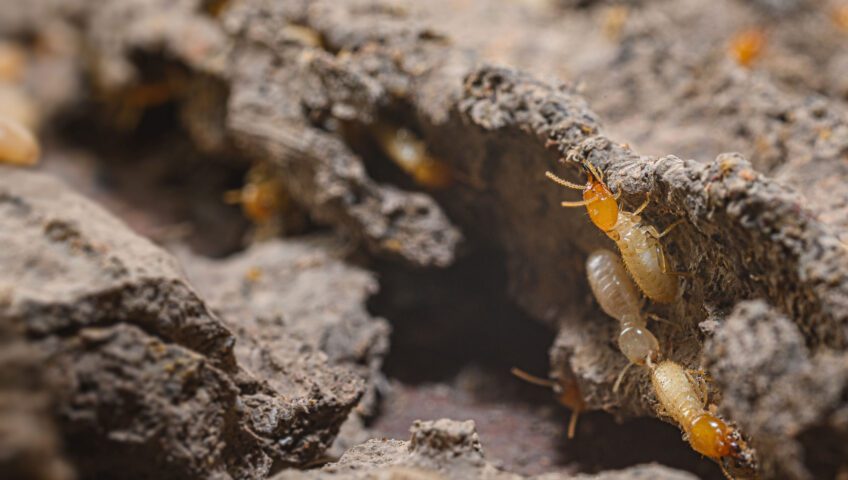The sci-fi genre has given us glimpses of creatures emerging from underground lairs to wreak destruction on humanity. Unfortunately, that scenario isn’t so farfetched. Subterranean termites do just that, inflicting billions of dollars in damage across the United States. Florida is an especially inviting climate for them.
The termite family contains subterranean and drywood species, with the latter doing more damage statewide. The genus Coptotermes, which includes the Formosan and Asian termites, is the worst of the bunch.
One of the things that makes the subterranean termite so destructive is that their presence isn’t readily apparent. Once the homeowner starts to see them around the premises, it’s likely there’s already significant damage. A common sign of infestation is the swarming of winged caste members called “alates” seen during mating season.
Another telltale sign of subterranean termites is the network of mud tubes running from the ground to the wood or stucco. Because these insects have soft bodies that dry out when exposed to the open air, they must travel from the underground colony to your house’s wood via these protective tubes.
You should, therefore, inspect your home periodically – at least once a year – for any mud tubes appearing on the foundation.
In addition, there are preventative measures you can take. Make sure your gutters are clean and keep sprinklers trained away from the house. Clear out any soil, mulch or plant material in direct contact with wood or stucco. Also, fix cracks in the foundation, even small ones – termites can get into some miniscule openings.
Remember, Slug-A-Bug is available to help you in both prevention and treatment of an active infestation. You get a one-year guarantee (and peace of mind) at no additional cost. Any home in Florida is at risk, so call us for a free, no-obligation estimate at (321) 259-7844. Don’t wait until you start seeing termites.
For more information:
https://www.cabi.org/isc/datasheet/15284
https://entnemdept.ufl.edu/creatures/urban/termites/native_subterraneans.htm
